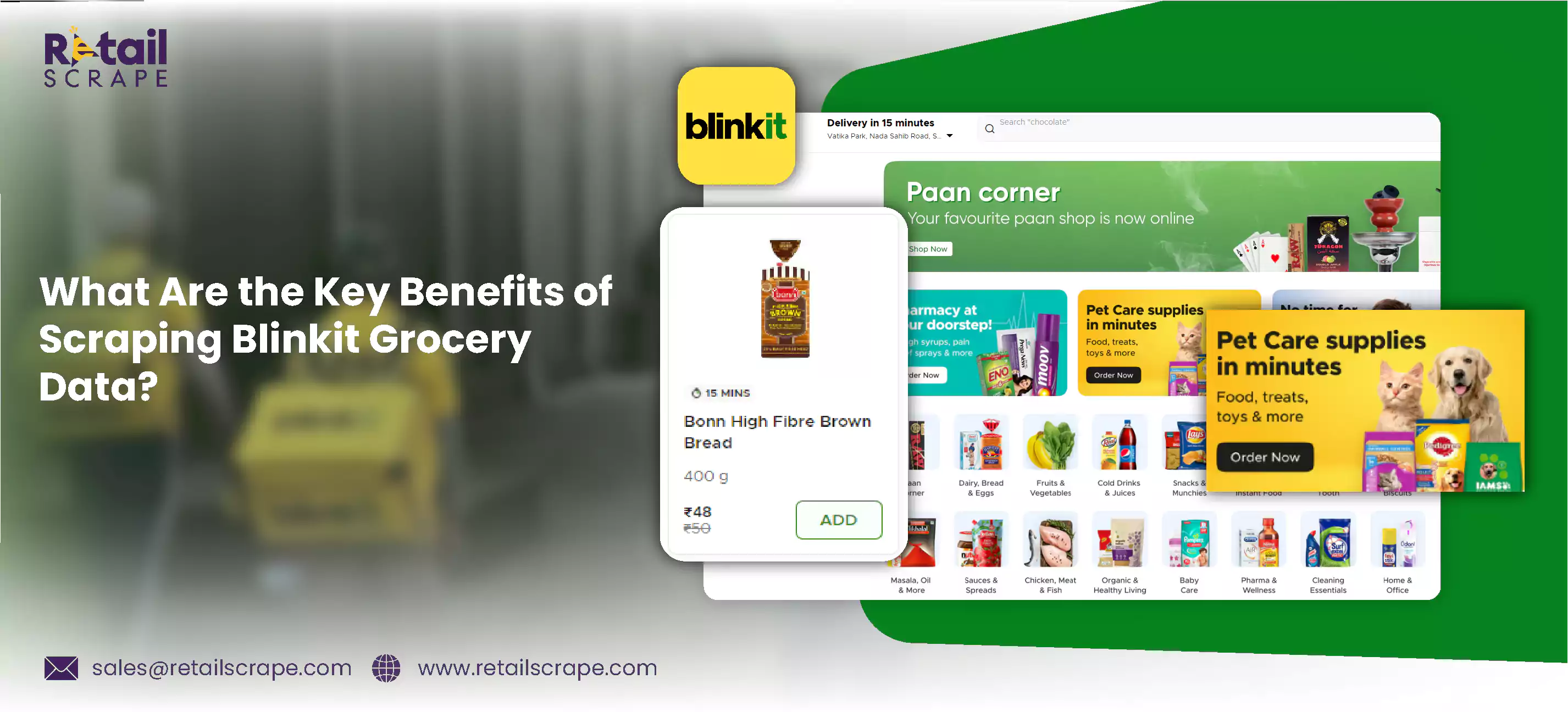
The surge in grocery data scraping has been driven by the need for more efficient and detailed market insights in the rapidly evolving retail landscape. As e-commerce expands, businesses increasingly rely on data scraping to gather comprehensive information about grocery products, prices, and inventory levels. This process allows for real-time monitoring, competitive analysis, and strategic decision-making.
One notable player in the grocery industry is Blinkit. As a prominent online grocery delivery service, Blinkit offers a wide array of products, making it a valuable data source for various stakeholders. Scraping Blinkit grocery data can provide insights into product availability, pricing trends, and promotional activities. By utilizing Blinkit grocery data scraping services, businesses can access up-to-date information that supports inventory management, market research, and competitive benchmarking.
The ability to scrape data from Blinkit and similar platforms empowers retailers and analysts to optimize their operations, enhance customer experiences, and maintain a competitive edge in the grocery sector. As data-driven strategies become increasingly crucial, the role of grocery data scraping, primarily from leading services like Blinkit, continues to grow in importance.
Why Is It Crucial to Scrape Blinkit Grocery Data?
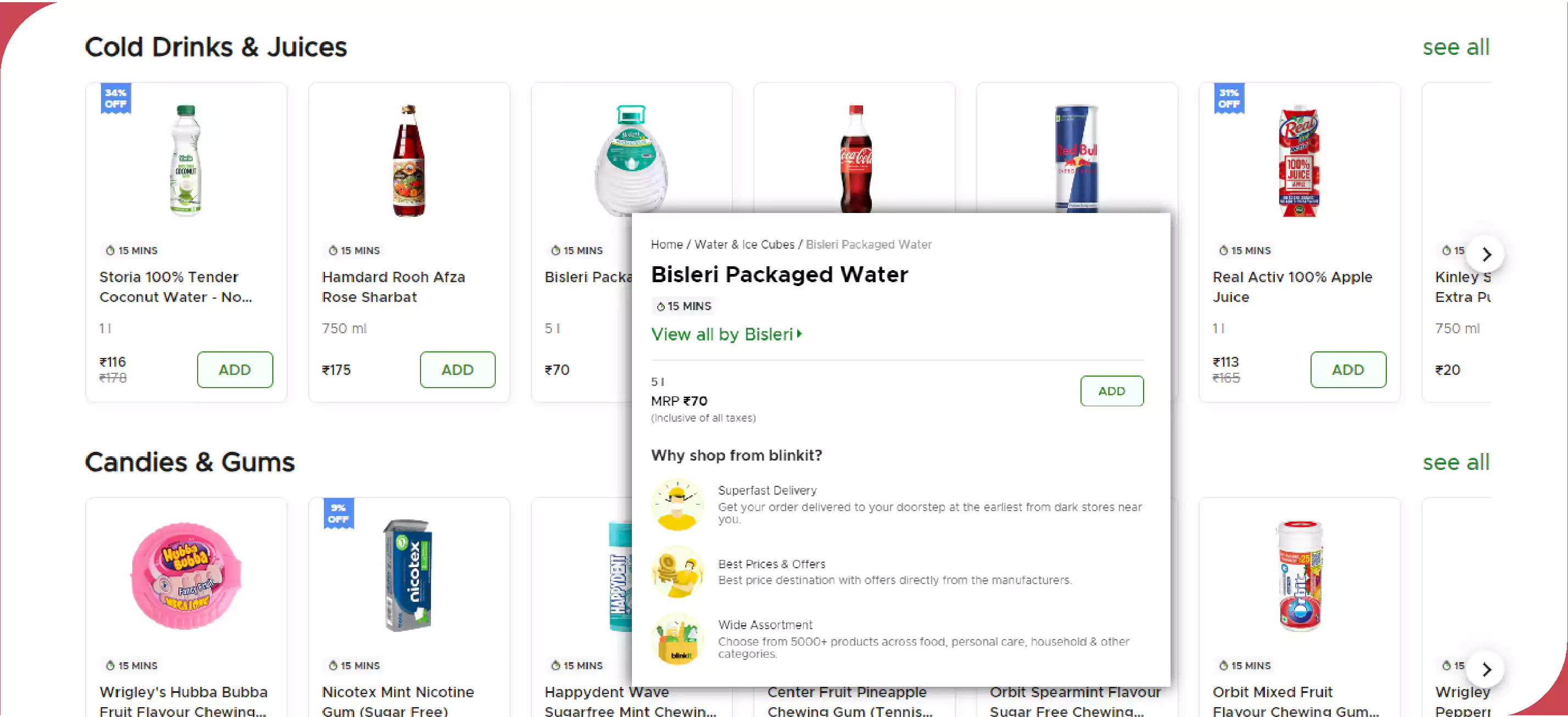
Scraping Blinkit grocery data is essential for optimizing e-commerce operations. It provides real-time insights into inventory, pricing trends, and promotional activities. By using Blinkit data scrapers and grocery data scraping services, businesses can enhance their competitive edge, improve inventory management, and make data-driven decisions to meet market demands.
1. Real-Time Inventory Monitoring Scraping Blinkit grocery data allows businesses to track inventory levels in real time. This is crucial for maintaining stock levels, avoiding overstocking or stockouts, and ensuring that the inventory data reflects the actual availability of products. With accurate, up-to-date information, businesses can manage their inventory more effectively and improve customer satisfaction by ensuring product availability.
2. Competitive Pricing Analysis: Companies can use a Blinkit data scraper to monitor and analyze the pricing trends of various grocery items on Blinkit. This insight is vital for developing competitive pricing strategies and staying ahead of competitors. Regular scraping of Blinkit grocery data enables businesses to adjust their pricing dynamically in response to market fluctuations and promotional activities, optimizing their pricing strategy for better market positioning.
3. Market Trend Identification: Blinkit grocery data extraction provides valuable information about emerging trends and consumer preferences. By analyzing scraped data, businesses can identify which products are gaining popularity, track seasonal variations, and understand purchasing patterns. This knowledge helps forecast demand, plan marketing strategies, and make informed decisions about product assortment and promotions.
4. Promotional and Discount Monitoring: Collecting data from Blinkit can reveal ongoing promotions, discounts, and special offers. This information is essential for businesses to adjust their marketing strategies and promotions accordingly. By keeping an eye on Blinkit's promotional activities, companies can align their promotions and pricing strategies to remain competitive and attract customers with compelling offers.
5. Enhanced Product Catalog Management: Accurate product data from Blinkit helps maintain an up-to-date and comprehensive product catalog. Businesses can extract detailed product information, including descriptions, images, and specifications, using grocery data scraping services. This ensures that their online catalogs are current and provide accurate information to customers, improving the overall shopping experience.
6. Customer Behavior Insights: Businesses can analyze customer behavior and preferences based on extracted data. Understanding which products are frequently purchased or viewed can help tailor marketing efforts and product recommendations to meet customer needs and preferences better.
7. Efficient Supply Chain Management: With access to real-time data from Blinkit, businesses can streamline their supply chain operations. Accurate data helps forecast demand, optimize procurement processes, and manage supplier relationships. This efficiency reduces operational costs and ensures a smoother supply chain operation.
8. Competitive Intelligence: It offers valuable competitive intelligence by providing insights into Blinkit's product offerings, pricing strategies, and promotional tactics. This information can be used to benchmark against competitors and develop strategies to enhance market competitiveness and performance.
Collecting Blinkit grocery data is crucial for obtaining accurate, real-time information that drives various aspects of business operations, from inventory management to competitive analysis. Utilizing a Blinkit data scraper and grocery data scraping services allows businesses to leverage this data for strategic decision-making, enhancing their efficiency and market positioning
Guide to Scrape Blinkit Grocery Data
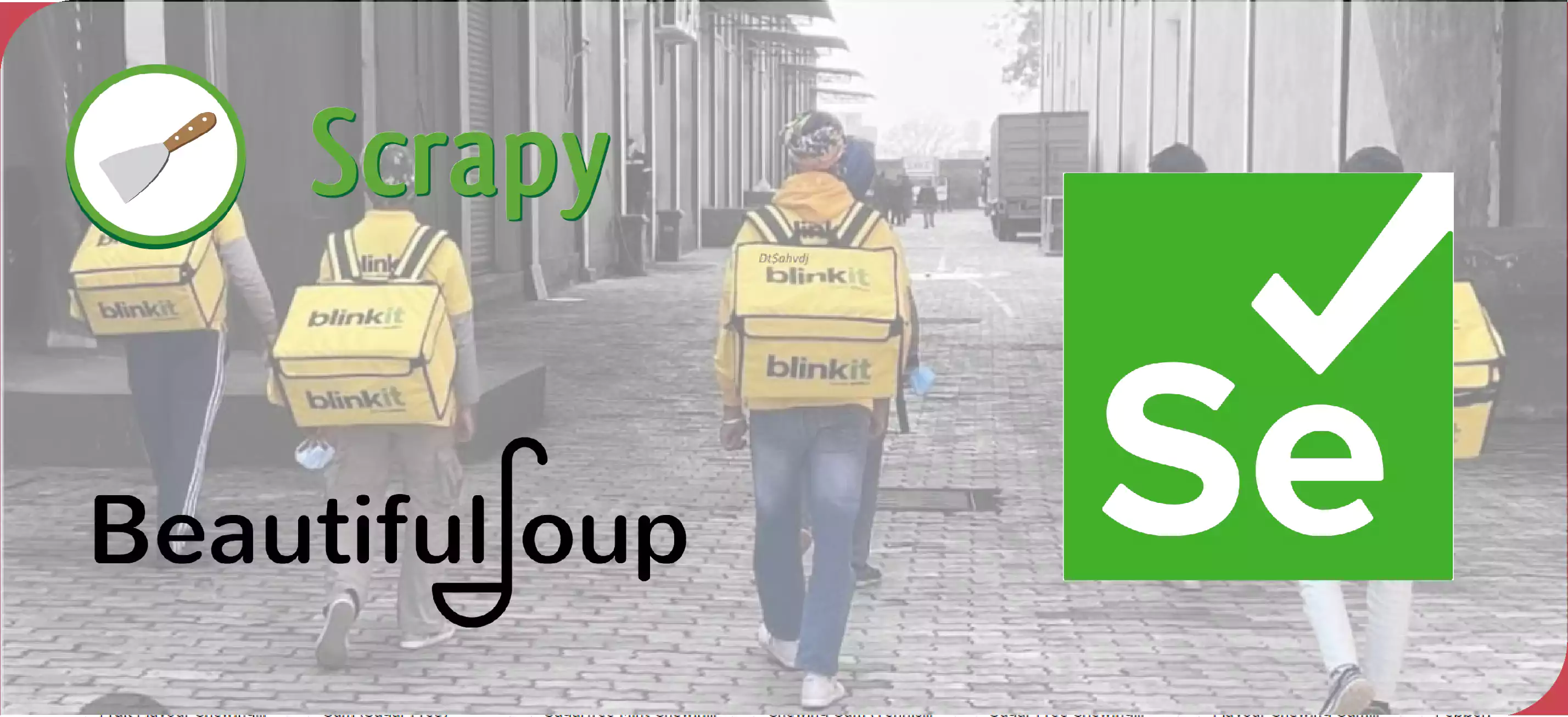
Scraping Blinkit grocery data involves several steps to ensure you efficiently collect and utilize the data for various business purposes. Here's a detailed guide to help you through the process:
1. Define Your Objectives
Determine Data Needs: Identify the specific data you need, such as product names, prices, availability, descriptions, and images.
Set Goals: Establish what you want to achieve with the data, whether for price comparison, inventory management, or market analysis
2. Select the Right Tools and Libraries
Web Scraping Tools:Choose a web scraping tool or framework that suits your needs, such as BeautifulSoup, Scrapy, or Selenium.
Programming Language: Python is commonly used for web scraping due to its powerful libraries and ease of use.
Data Extraction Libraries: Consider tools like Pandas for data manipulation and Tesseract OCR for text extraction from images for advanced extraction.
3. Inspect the Blinkit Website
Navigate to Blinkit: Visit the Blinkit website and locate the pages or sections containing the grocery data you want to scrape.
Analyze HTML Structure: Use browser developer tools (F12 or right-click and select "Inspect") to examine the HTML structure. Identify the tags and attributes where product data is stored.
Find Patterns: Look for patterns in the URLs, image paths, and HTML elements that will help you target the data more effectively.
4. Develop Your Scraping Script
Set Up Your Environment: Install the necessary libraries and set up your development environment
pip install requests beautifulsoup4 5.Code to Fetch Web Pages:
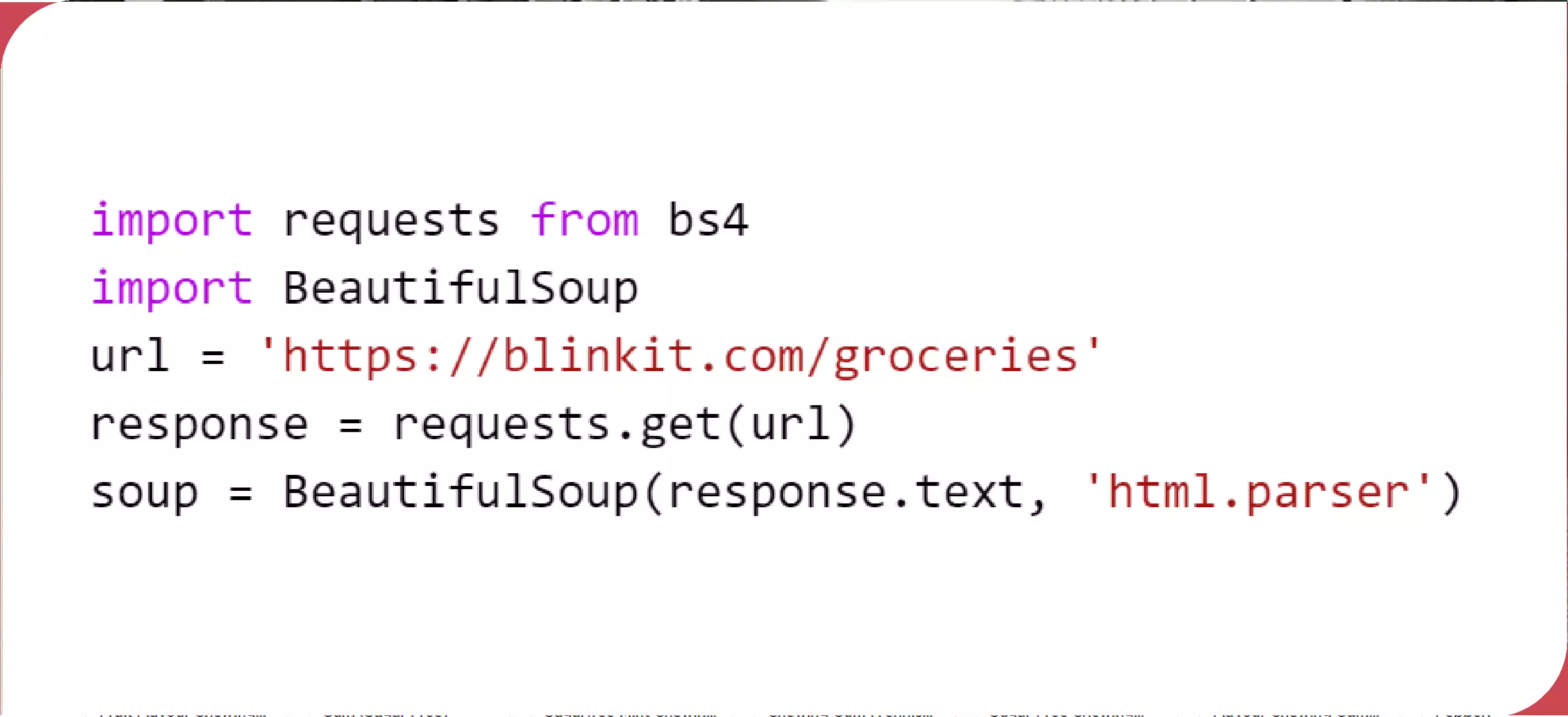
Extract Data: Use BeautifulSoup or your chosen library to locate and extract the data based on the HTML structure you analyzed.
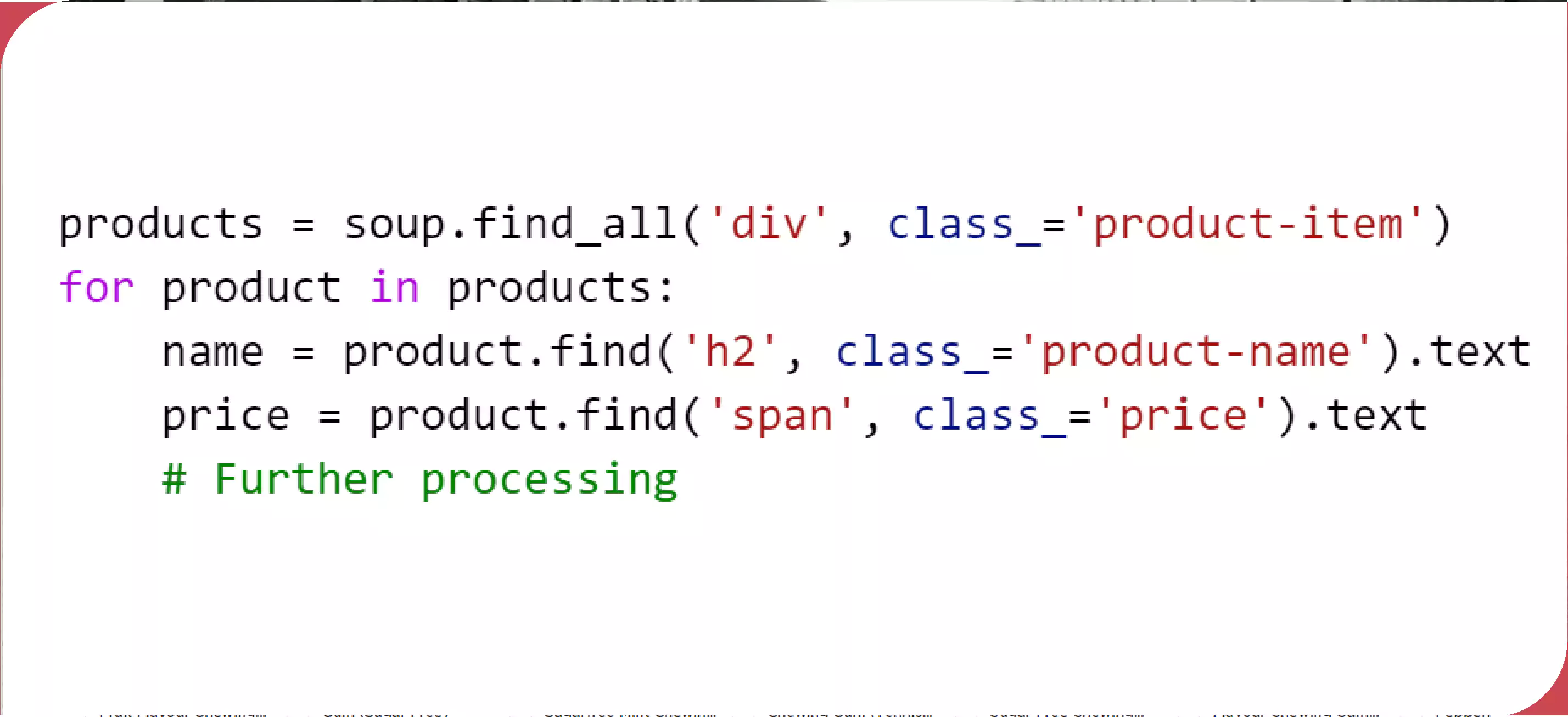
Handle Pagination: If the data spans multiple pages, implement pagination handling in your script
next_page = soup.find('a', class_='next-page')['href']6.Handle Images
Extract Image URLs: Locate image elements and extract their URLs
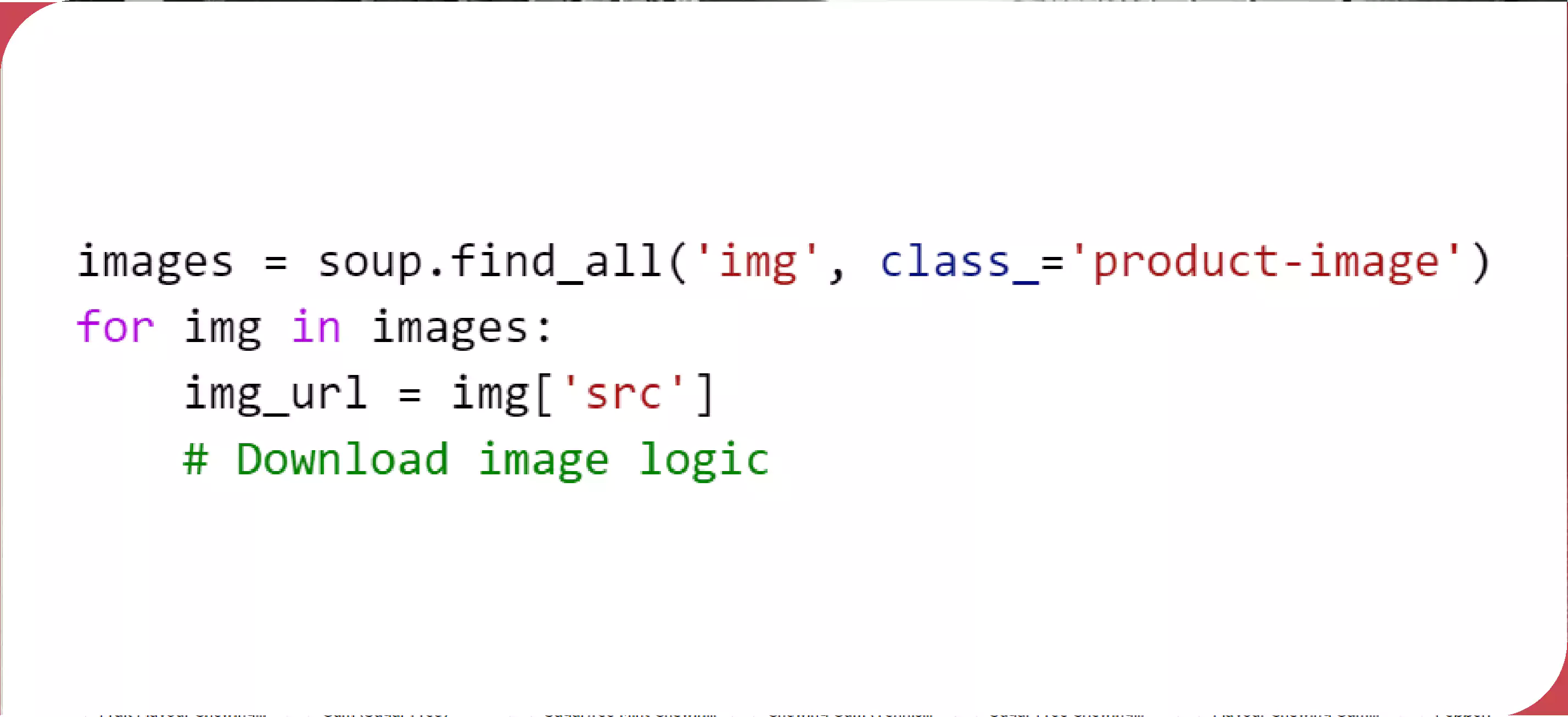
Download Images: Save images to your local storage or cloud storage
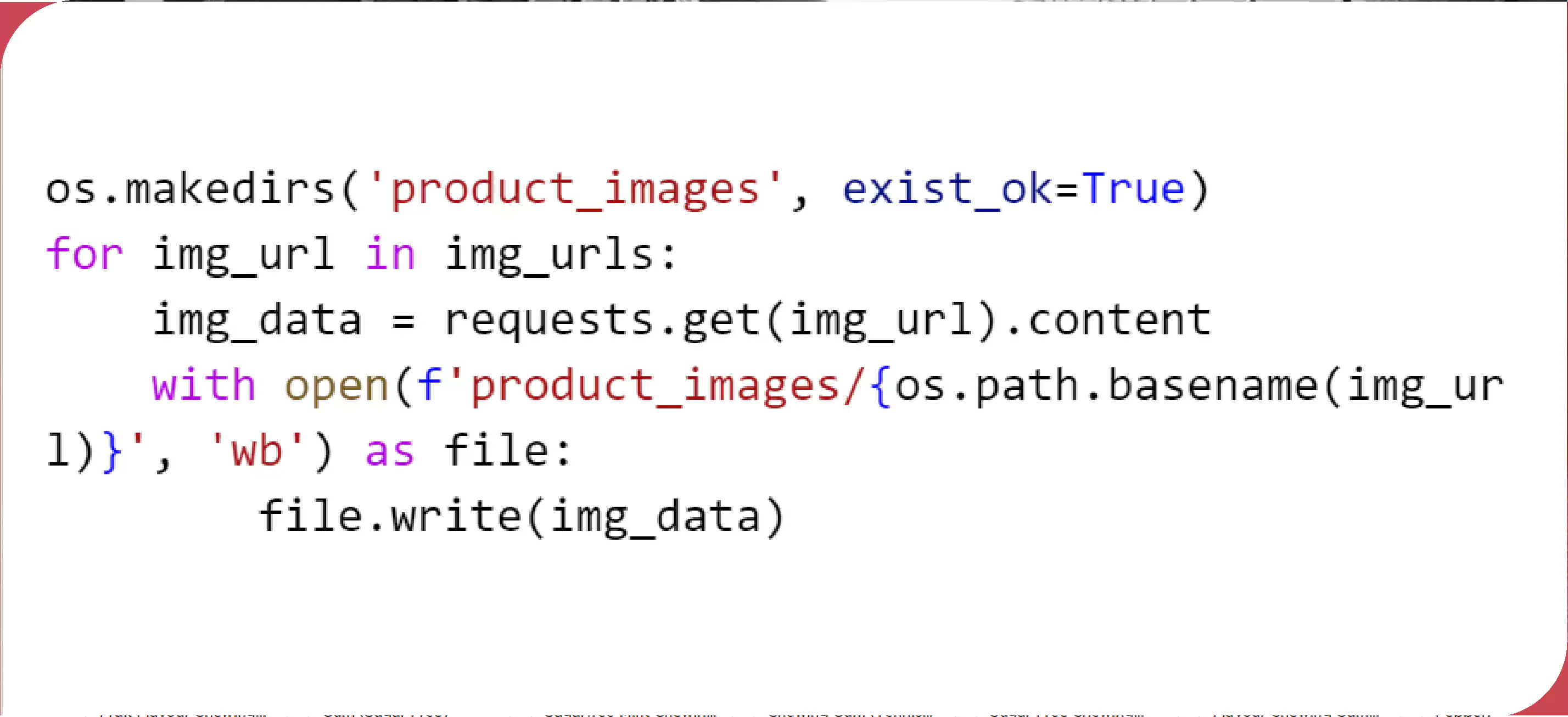
7.Implement Data Storage
Choose Storage Format: Decide how to store the scraped data, whether in a CSV file, database, or JSON
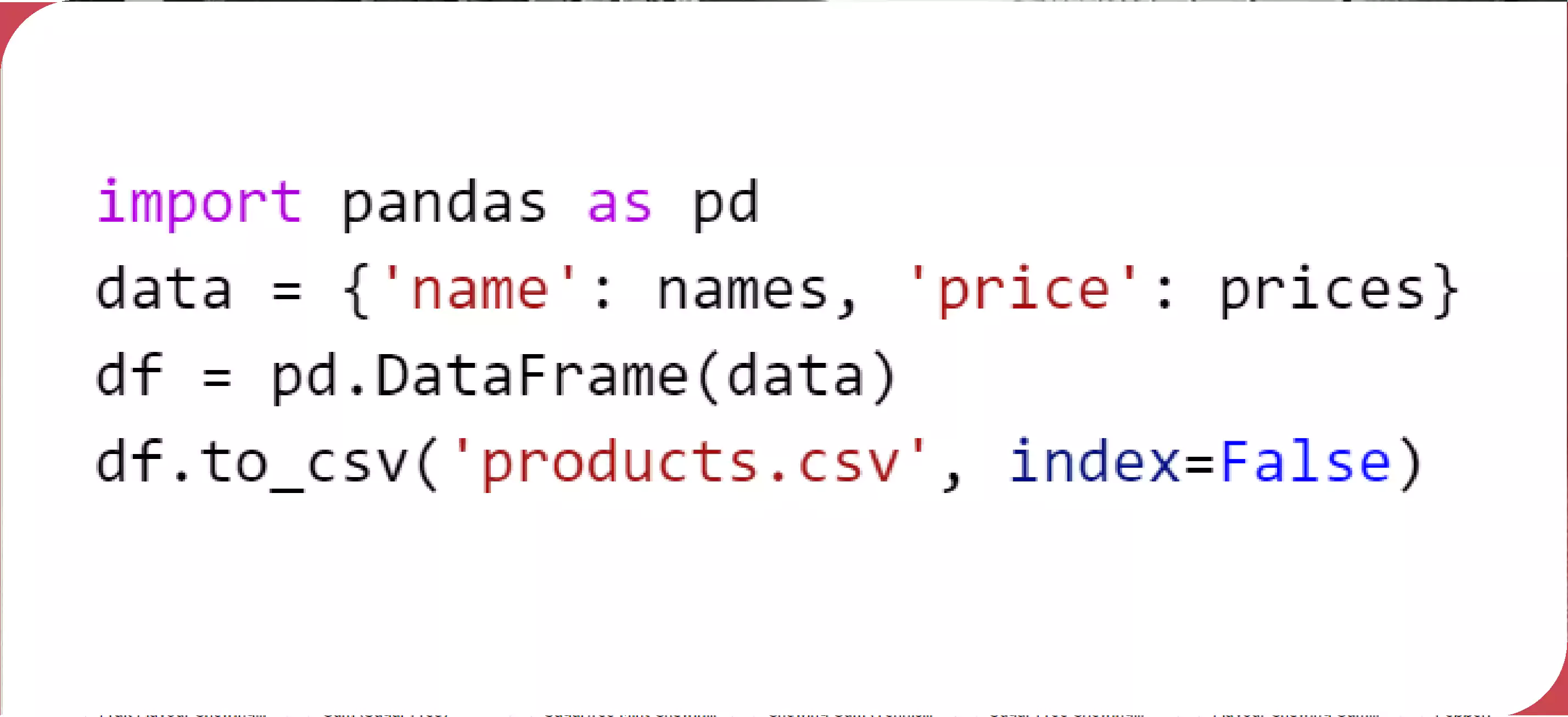
Apply Data Cleaning and Validation
Clean Data: Remove unnecessary characters, handle missing values, and ensure data consistency.
Validate Data: Verify that the data is accurate and complete
8. Respect Legal and Ethical Guidelines
Check Terms of Service: Review Blinkit's terms of service to ensure that your scraping activities comply with their policies.
Avoid Overloading Servers: Implement rate limiting and avoid sending too many requests quickly to prevent server overload.
9. Schedule Regular Scraping
Automate the Process: Set up a schedule to run your scraping script regularly to keep your data updated
Monitor and Maintain: Regularly check for changes in the website structure or scraping errors and update your script accordingly.
10. Analyze and Use the Data
Data Analysis: Use analytical tools or data visualization techniques to derive insights from the scraped data.
Integrate Data: Incorporate the data into your business processes, such as updating product catalogs or enhancing search functionalities.
Following these detailed steps, you can effectively scrape Blinkit grocery data and leverage it for various business applications.
Conclusion: Scraping Blinkit grocery data offers significant advantages for e-commerce and market analysis by providing real-time insights into product details, pricing, and inventory. This process enables businesses to enhance their competitive edge, optimize inventory management, and improve pricing strategies. By leveraging advanced scraping techniques and tools, companies can efficiently gather and integrate valuable data into their operational workflows. Ensuring compliance with legal guidelines and maintaining data quality is crucial for successful implementation. Scraping Blinkit grocery data ultimately empowers businesses with actionable insights, driving informed decisions and fostering growth in the dynamic e-commerce landscape.
Transform your retail operations with Retail Scrape Company's data-driven solutions. Harness real-time data scraping to understand consumer behavior, fine-tune pricing strategies, and outpace competitors. Our services offer comprehensive pricing optimization and strategic decision support. Elevate your business today and unlock maximum profitability. Reach out to us now to revolutionize your retail operations!
